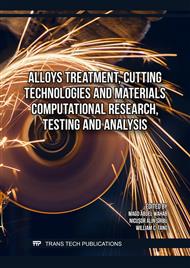p.49
p.59
p.73
p.81
p.93
p.107
p.119
p.129
p.141
Internal Failure Detection in Laminated Rubber Bearing Using Deep Learning Techniques
Abstract:
Automating failure detection of infrastructure is essential to avoid unexpected downtime, which could impact both operations and user safety. However, frequent replacement of laminated rubber bearing (LRB) as a vital seismic isolation component can be inefficient and inspecting them for faults is often labor-intensive. This is a significant challenge in maintaining structural integrity, especially in critical infrastructure where continuous monitoring is necessary. Recent innovation in deep learning (DL) provides a promising alternative to traditional inspection methods, offering more efficient and accurate assessments. Hence, this paper explores the practical application of DL for detecting internal failure in laminated rubber bearings installed in structures. Neural network models, including a convolutional neural network (CNN), long-short term memory (LSTM), and their combinations (hybrid CNN-LSTM), were employed. An experimental setup was developed to simulate a bridge structure supported by down-scale LRB samples at its base. Samples with internal debonding failure were manufactured by reducing the bonding adhesive, to replicate failure conditions due to shear loading where the LRBs were forced to slide in an extreme condition. The vibration platform was actuated under different levels of frequency. Both Healthy and Faulty LRB conditions data were collected for 10 minutes each, which is adequate for 10 sets of data divided into training, validation, and testing with a fixed 6:2:2 ratio, respectively. Results revealed that CNN outperformed the other two models in average classification accuracy at 5Hz and 10Hz with 97.65% and 91.45%, respectively. Plus, CNN recorded the shortest training period among all models compared, with only 128 seconds at 15Hz, compared to 695 seconds and 1599 seconds owned by LSTM and hybrid CNN-LSTM respectively. In conclusion, neural networks have shown the capability in identifying LRB internal failure. CNN has the advantage in terms of both classification accuracy and training period compared to LSTM and hybrid CNN-LSTM models.
Info:
Periodical:
Pages:
141-147
Citation:
Online since:
November 2025
Price:
Сopyright:
© 2025 Trans Tech Publications Ltd. All Rights Reserved
Share:
Citation:


